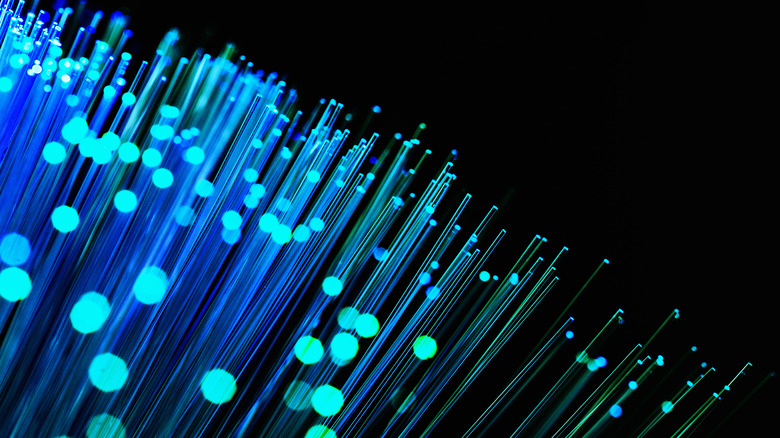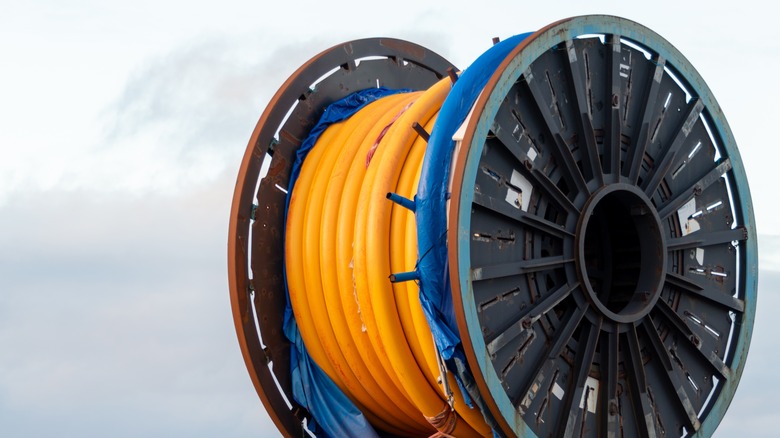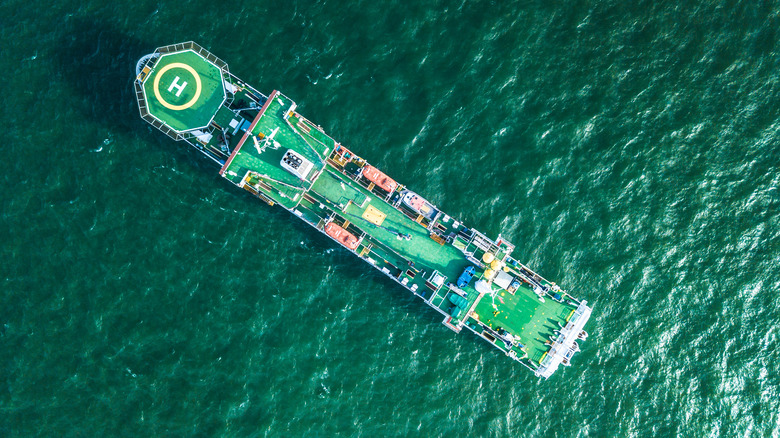How Scientists Plan To Use Fiber Optic Technology To Detect Earthquakes And Tides
Every year, about 20,000 earthquakes are registered around the world; this means roughly 55 every day, shaking Earth's crust (via USGS). Sixteen of these yearly-registered earthquakes are more dangerous, with the potential to be deadly. Earthquakes whose epicenters originate in the depths of the ocean can trigger tsunamis with devastating consequences. The Tonga tsunami of January 2022 was a prime example of how dangerous undersea earthquakes can be.
The advances made in ocean technology and seismic instruments have allowed scientists to keep better track of underwater earthquakes and improve tidal monitoring. Scientists study earthquakes and tsunamis to better predict them and to gain insights into the inner composition of the Earth. Ocean science also helps us prepare better emergency and environmental management plans and build safer cities, per Science Learning Hub. But scientists still struggle to cover the inaccessible oceanic 71% of our planet.
As Submarine Cable Map reveals, hidden from sight, on the seafloor, a vast and impressive network of fiber optic cables crisscross the oceans. Laid by private communications companies, the cables connect the world to the internet and provide communications. Scientists, military, and governments have been playing with the idea of using this network to better study and monitor ocean activity. One of the most advanced projects in the field is called SMART, for Science Monitoring And Reliable Telecommunications. It plans to integrate sensors into ocean-submerged cables. However, a new study says that the fiber optic ocean submarine network in place already has everything needed to monitor seismic activity.
Measuring lasers running through fiber optics under the ocean
Scientists behind a new research paper titled "Optical interferometry–based array of seafloor environmental sensors using a transoceanic submarine cable" believe they have found a way to use repeaters that boost signals across submarine cables to detect seismic activity and study tides. Researchers explain that optical cables can monitor earthquakes and even ocean currents, but the signal integrates across the entire length of the cable. This makes pinpointing the exact location of the event nearly impossible. But scientists say that repeaters, which are installed every 45 to 90 kilometers, solve that problem. Testing this theory on a 5,800-kilometer cable running on the seafloor, they focused on the segments between repeaters.
By firing a laser through the cable, they could identify the location of an earthquake through triangulation. Thousands of real-time sensors could detect changes on the ocean floor, the paper concludes. When repeaters are coupled with a laser, they turn into vibration sensors. As events disrupt the laser, the light variations can be measured. The more repeaters used, the more accurate and extensive the geophysical underwater sensing system is. Fiber optics could track earthquakes, monitor tides, study currents, and even register temperature.
What do other scientists say?
Popular Science reported that the research team, led by Giuseppe Marra from the U.K.'s National Physical Laboratory, ran a test on a subsea cable that crossed from Northwest England to Canada. They not only detected earthquakes all the way from Peru and Indonesia; they recorded the noise of moving ocean waters.
Scientists believe, eventually, this method can provide better tsunami warnings and teach them more about the interactions between tectonic plates. However, oceanographer Bruce Howe from the University of Hawaii told Popular Science that the method does not collect data as normal seismology instruments do. For example, the magnitude of an earthquake could not be determined.
Zack Spica, a seismologist from the University of Michigan, was more optimistic about the thousands of sensors at their disposal. Tech companies have not been very enthusiastic about installing expensive equipment on their submarine ocean cables. However, not all tech companies are against the idea of using their cables for oceanic science.
How Google used its ocean fiber optic cables to detect earthquakes
On July 16, 2020, Google Global Networking said they believed all the international submarine fiber optics could be used to create earthquake and tsunami warning systems that benefit the world. After years of study, Google experiments showed positive results for the use of subsea fiber optic cables in the study and detection of seismic activity.
Google added that this does not involve special equipment. The company uses optical fibers that carry data as pulses of light traveling at 204,190 kilometers per second. These pulses encounter distortions as they travel through the cables underwater, which are analyzed and corrected. The effort was inspired by a 2018 paper published in Science, where the authors analyzed a property of light that they were tracking to correct distortions called state of polarization, or SOP.
In late 2019, Google began testing this technique, and on January 28, 2020, after months of ocean silence, they detected a magnitude 7.7 earthquake off Jamaica, an astonishing 1,500 kilometers away from the closest point of one of their cables. Over the next few months, they continued detecting earthquakes, including a 6.1 earthquake on the East Pacific Rise and a 4.5 earthquake near Valparaiso, Chile.



